The business world is constantly changing, and to succeed today, organizations must adapt to the latest trends quickly. Social Business Intelligence (SBI) is a trend that allows organizations to leverage social media data to make more informed decisions. With SBI, businesses can assess customer sentiment, build relationships, perform market research, evaluate sales funnels, and measure campaign success while staying ahead of their competition.
So how can your organization benefit from this powerful strategy? This blog post will cover how businesses can use SBI to gain actionable insights to make better decisions and get a competitive edge in the marketplace—also the benefits of implementing SBI in your social media marketing strategy.
What Is Social Business Intelligence?
Social Business Intelligence (SBI) is invaluable for businesses seeking a competitive edge. By leveraging social media data, organizations can unlock insights into customer sentiment, build relationships, perform market research, and measure the success of their campaigns. SBI offers a range of powerful tools, such as CRM systems and business intelligence software solutions, which can provide real-time data that business owners and leaders can use to make informed decisions. Additionally, using SBI tools allows businesses to create reports and dashboards that visualize social media analytics. This type of intelligence will enable companies to stay ahead of the competition and ensure success in the long run by making sound business decisions based on accurate real-time data.
SBI allows businesses to measure their success over time by tracking key metrics such as reach, engagement, and conversions. SBI also helps companies to stay ahead of the competition by providing real-time data that can be used to make informed decisions quickly, allowing them to respond faster than their competitors and capitalize on opportunities before they’re gone.
Social Business Intelligence: How to Use Social Media to Gather Social BI
Using SBI tools such as customer relationship management (CRM) or business intelligence software solutions can provide real-time data which can be used to make data-driven decisions.
When collecting social BI, it is vital to consider the data collection type. This includes data gathered from Twitter, Instagram, Facebook, LinkedIn, and YouTube. A good starting point is determining which specific metrics are relevant for your business and how you can collect them. For instance, a company selling sporting goods might look at metrics such as customer sentiment about their products on Twitter or YouTube buzz around their new product launches. Doing this allows the company to develop better marketing strategies by understanding people’s thoughts about their products. In addition to gathering data from social media platforms, monitoring conversations in non-social channels such as blogs and forums is also beneficial. By listening to conversations that are taking place in these online communities, businesses can gain further insights into customer sentiment and preferences. Companies should also use social BI to track market conditions and key performance indicators (KPIs). This data can be used to monitor market trends and predict future performance. Using social BI to analyze the competition and identify opportunities, businesses can develop better strategies that give them a competitive edge. Social Business Intelligence is an invaluable tool for businesses seeking a competitive edge in today’s rapidly changing markets. By leveraging real-time data from various platforms, organizations can gain actionable insights to help them adapt their business processes and marketing strategies in response to changing market conditions.
Understanding the Importance of Social Business Intelligence
It helps improve existing projects and provides insights to improve the organization’s overall strategy. By speeding up the time to social insights, businesses can stay ahead of the competition and track social influences and reputation. Leveraging self-service and user-generated reports helps organizations to manage their resources effectively. Social BI emphasizes pattern recognition, analysis, and visualization, enabling organizations to identify trends and make data-driven decisions. The role of social media in business intelligence cannot be ignored, as organizations can gain valuable insights from the listening data to inform their social strategy.
Social BI also allows organizations to detect customer needs and preferences, allowing for more personalized experiences. By understanding customer sentiment, businesses can increase engagement and loyalty. Social BI also helps organizations understand their customers’ wants and needs in real-time so that they can adjust their strategies accordingly. Social BI can track competitor activity and discover new growth opportunities. With improved visibility into competitors’ activities, businesses can gain the upper hand in the market and make better decisions that lead to higher returns on investment. The importance of social business intelligence cannot be understated, as it helps businesses stay ahead of the competition while improving resource management and gaining valuable insights into customers. By leveraging self-service and user-generated reports, organizations can gain new insights that inform their business decisions and strategies. With the right tools and techniques, businesses can unlock the value of social media data to improve customer relationship management, develop better marketing campaigns, and stay ahead of the competition.
Benefits of Speeding Up Time to Social Insights
Speeding up the time for social insights is crucial for businesses looking to gain a competitive edge through social business intelligence. By accessing and acting on real-time data, companies can make informed decisions that lead to increased revenue and improved efficiency. Furthermore, the ability to analyze social media activity quickly provides valuable insights that can help businesses grow their brand and stay ahead of competitors. With self-service and user-generated reports, companies can effortlessly track social influences and reputation, emphasizing pattern recognition, analysis, and visualization to improve overall decision-making. One of the significant benefits of speeding up time to social insights is that businesses can react quickly to changes in the market. Real-time data analysis allows companies to identify and capitalize on opportunities faster. Additionally, businesses can gain insights into their customer base by analyzing current trends and sentiment across various social media platforms. With this information, companies can make decisions around marketing campaigns, product offerings, and other initiatives that will help increase customer engagement.
Another benefit of speeding up time to social insights is providing a more comprehensive view of the marketplace. By combining traditional sources such as surveys with new sources such as online conversations and reviews, businesses can better understand their target demographic and develop strategies accordingly. This, in turn, will allow them to create more effective marketing campaigns that reach a more significant portion of their audience. Businesses can use social insights to gain an understanding of their competitors. By monitoring competitor activities and tracking key performance indicators, companies can develop strategies to gain a competitive edge in the market. This information helps inform business decisions and provides valuable insights into the effectiveness of their plan. Overall, speeding up time to social insights offers many advantages for businesses looking to stay ahead of the competition and improve their bottom line. With real-time data analysis, companies can react quickly to changes in the market, gain insights into customers’ needs and wants, and monitor competitor activity. By leveraging self-service, user-generated reports, and traditional sources such as surveys, businesses can gain a more comprehensive view of the marketplace and develop data-driven decisions. The insights gained from social business intelligence can help companies to gain a competitive advantage and drive their bottom-line growth.
Exploring the Role of Social Media in Business Intelligence
In exploring the role of social media in business intelligence, it is clear that it plays a vital role in providing insights into customer behavior, sentiment, and preferences. By leveraging self-service and user-generated reports, businesses can effectively track social influences and reputation and emphasize the essential components of pattern recognition, analysis, and visualization. This intersection between business intelligence and social media enables companies to capture strategic information from public social networks, allowing them to make data-driven decisions that improve performance and increase profits. Effective management of human resources with social BI is possible by implementing a corporate strategic BI committee that collaborates on interactive business intelligence, which promotes sharing and collaboration of data-driven insights.
Social business intelligence provides a competitive advantage to organizations by helping them capture, analyze, and visualize data from social networks in real time. By leveraging this data, companies can gain insights into customer sentiment and preferences that can be used to inform marketing strategies and product development. Additionally, organizations can use social BI to identify potential customer segments, track customer support interactions, spot influential customers and influencers on social media channels, and monitor brand reputation across multiple platforms. Organizations have various ways of gaining actionable insights from their customer’s activity on social networks through analytics tools such as sentiment analysis, predictive analytics, machine learning algorithms, natural language processing (NLP), and text classification techniques. These advanced analytics techniques allow businesses to gain data-driven insights that drive better decision-making and strategic planning. Combining social media data analysis and business intelligence is a powerful tool for companies to gain competitive advantages in their respective markets.
Social business intelligence gives organizations the power to make informed decisions and develop strategies quickly in response to changes in market conditions. By leveraging social listening, businesses can track customers’ reactions to products and services, monitor industry trends, identify potential customer segments, and measure the effectiveness of marketing campaigns. By integrating customer relationship management (CRM) solutions with social BI, companies can gain deeper insights into customer behavior, allowing them to create tailored experiences that build brand loyalty. Overall, it is clear that social business intelligence plays an essential role in providing organizations with the insights they need to make informed decisions, develop winning strategies, and gain a competitive edge. By leveraging self-service and user-generated reports, businesses can effectively track social influences and reputation and emphasize the essential components of pattern recognition, analysis, and visualization. With real-time data analysis, companies can react quickly to changes in the market, gain insights into customer needs and wants, and monitor competitor activity while improving their bottom line. Social business intelligence gives organizations the power to capture strategic information from public social networks, enabling them to make data-driven decisions that will enhance performance and increase profits.
Assess Customer Sentiment
Social business intelligence (SBI) is a powerful tool for assessing customer sentiment. By analyzing customers’ conversations, reviews, and feedback across various social media platforms, SBI provides businesses with an accurate and up-to-date picture of how consumers feel about their products and services. With this data, companies can identify trends in customer sentiment and gain valuable insights to inform their decisions. SBI can provide organizations with an understanding of what customers desire from them – allowing them to make informed changes to meet their needs better. Through SBI, businesses can develop more effective strategies for engaging with customers and providing superior customer service, leading to increased loyalty and improved brand reputation.
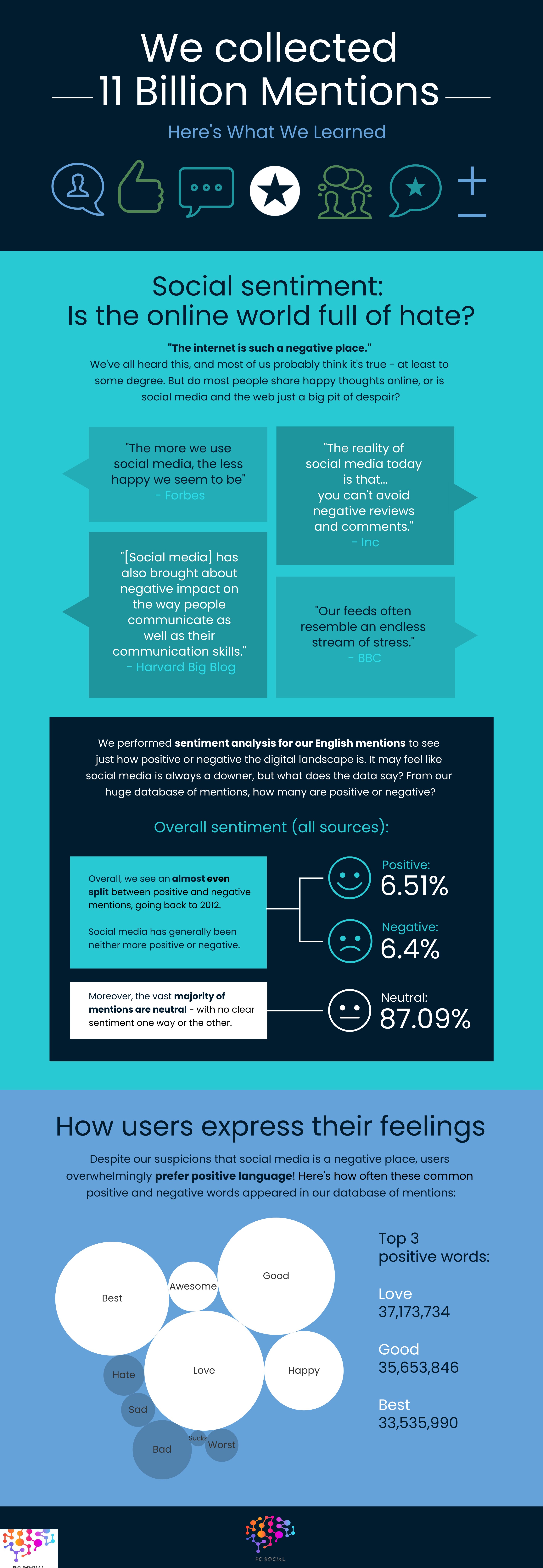 Social Mentions
Social Mentions
SBI can be used to identify potential issues before they become problems. Companies can use SBI to monitor customer conversations and quickly address complaints before they escalate into more serious matters. With the ability to detect negative sentiment before it spreads, organizations can take steps to improve their services and protect their reputation. Social business intelligence is invaluable for gaining insights into customers’ opinions and better understanding their wants and needs. By assessing customer sentiment through SBI, companies can make informed decisions that improve customer satisfaction, increase loyalty, and a more substantial brand presence in the marketplace.
Leveraging Self-Service and User-Generated Reports
In business intelligence, self-service environments have revolutionized how data is accessed and analyzed. By leveraging self-service BI tools, end-users can create data visualizations and design dashboards independently without needing a statistical analysis or data mining background. This capability enables non-technical users to make critical decisions and gain a competitive edge. Additionally, user-generated reports from various online social media forums can be used to gather valuable insights into customer behavior and preferences.
This type of data is invaluable for businesses as it provides real-time intelligence about the habits and behaviors of their customers. By accumulating, analyzing, and interpreting this data, companies can make better decisions about marketing strategies, product development, pricing, customer service initiatives, and other essential business operations. Combining self-service BI tools and user-generated reports from social media can provide organizations with a wealth of valuable information that can be leveraged to make more informed decisions. Self-service BI tools enable end users to create data visualizations and develop dashboards independently without needing a background in technical skills or statistical analysis. Additionally, user-generated reports from various online social media forums can be used to gather valuable insights into customer behavior and preferences. Organizations have much to gain from leveraging social business intelligence tools. By leveraging these solutions, businesses can quickly identify trends in customer behavior, develop tailored marketing campaigns, and measure the effectiveness of their campaigns.
Tracking Social Influences and Reputation
Tracking social influences and reputation is a crucial aspect of social Business Intelligence (BI). By monitoring competitor activity and customer sentiment, companies can anticipate market trends and adjust their strategies accordingly. Leveraging self-service and user-generated reports, social BI allows businesses to sift through the vast amount of data available on social media and pinpoint the most critical insights. Emphasizing pattern recognition, analysis, and visualization, social BI enables companies to identify patterns and make informed decisions. Social BI also significantly manages human resources by identifying top-performing employees and streamlining recruitment. By utilizing interactive business intelligence for sharing and collaboration, companies can ensure that all stakeholders have access to critical information in real time, allowing them to stay competitive and agile in a rapidly changing market.
Social BI is also beneficial for reputation management. By tracking user-generated content, companies can monitor how their brand is perceived and respond quickly to negative comments or reviews. Companies can also follow the activity of their competitors, allowing them to stay ahead of the game in terms of product innovation and marketing campaigns. Using social media analytics, companies can measure customer sentiment towards a particular product or service and modify existing marketing strategies accordingly. Using data from social BI reports, businesses can also identify influencers with a large following and leverage their influence to attract more customers through endorsements and promotions. Tracking social influences and reputation is an invaluable tool for businesses in today’s digital landscape. With self-service and user-generated reports, companies can accurately assess customer sentiment and track competitor activity to stay ahead. Social BI also enables businesses to develop tailored marketing campaigns and measure their effectiveness in real time, allowing them to maximize their returns on investments and gain a competitive edge. By leveraging social BI, businesses can make informed decisions based on actionable insights from real-time data and ensure success in today’s ever-changing market conditions.
Emphasizing Pattern Recognition, Analysis, and Visualization
Pattern recognition, analysis, and visualization are the cornerstones of business intelligence. The ability to recognize patterns in complex data sets, analyze them for insights and visualize them in an easily understandable form are essential in making informed business decisions. This is particularly important in social media, where vast amounts of data are generated daily. Leveraging self-service and user-generated reports, businesses can explore the role of social media in business intelligence and track social influences and reputation. Effective pattern recognition allows firms to identify user trends, patterns, and behavior across platforms, which are invaluable in informed decision-making.
An analysis is the second cornerstone of business intelligence. By analyzing social media data, businesses can better understand customer behavior and preferences and how well their products or services performed. This data can also be used to develop better marketing strategies or identify potential areas for improvement. Additionally, businesses can use analysis to uncover insights into customer sentiment and overall market trends to better target their messaging to the right audiences. Visualization is essential in business intelligence. Through graphs, charts, and tables, businesses can quickly and easily interpret complex data sets with visual cues that provide an immediate understanding of the underlying information. This allows them to quickly recognize patterns and draw conclusions without spending hours manually analyzing vast data. Social business intelligence is crucial for businesses in today’s digital landscape. By leveraging self-service and user-generated reports, companies can gain a competitive advantage through accurate pattern recognition, analysis, and visualization of complex datasets from various social media platforms. This allows them to make informed decisions based on actionable insights from real-time data and ensure success in today’s ever-changing market conditions.
 Social Listening and Mentions
Social Listening and Mentions
The Intersection of Business Intelligence and Social Media
The intersection of business intelligence and social media. It highlights the importance of using social media data in business intelligence to gain valuable insights into consumers, competitors, and market trends. Leveraging user-generated reports and self-service tools can speed up the process of analyzing social media data for improved decision-making. Tracking social influences and reputation is essential for managing brand image and adjusting marketing strategies. Pattern recognition, analysis, and visualization are crucial in bridging the gap between social media data and business outcomes. Companies can effectively manage human resources with social BI by using the data to identify skill gaps and train employees based on performance.
Social BI tools are designed to collect, analyze, store, and visualize large amounts of data from various sources in real time. This helps organizations make informed decisions quickly and with confidence. Additionally, social BI enables companies to identify influencers who significantly impact their campaigns’ success. The benefits of using social business intelligence extend beyond just gathering data. It also allows companies to monitor customer sentiment and interactions, identify potential risks such as reputational damage or plagiarism issues before they become serious, and measure the effectiveness of campaigns. This gives companies a competitive edge in today’s ever-changing market conditions and improved customer satisfaction. Social business intelligence provides an invaluable resource for businesses to understand their customers and act quickly on critical insights. By leveraging self-service tools and user-generated reports, companies can identify trends, patterns, and behavior across platforms to make informed decisions in real-time. With social BI, businesses can gain a competitive advantage through improved marketing strategies, increased customer loyalty, and accurate data-driven decisions essential for success in today’s digital landscape.
Perform Market Research
Social business intelligence (SBI) is one of the most powerful tools available to businesses today. With SBI, companies can comprehensively understand the marketplace by tracking and analyzing data from social media users, customers, and competitors. This data can then be used to make informed decisions about marketing strategies, product launches, customer relationships, etc. With real-time insights into customer behavior and market conditions, businesses can stay ahead of their competition, giving them an edge in an ever-evolving landscape. SBI can help streamline business processes and ensure resources are allocated efficiently.
Using SBI to perform market research is a great way to understand the current state of the marketplace. By monitoring customer and competitor conversations, companies can gain valuable insights into trends, customer needs, and preferences. This data can be used strategically to identify growth opportunities or refine existing products and services for tremendous success. Companies can also track brand sentiment across social channels to monitor their reputation and make adjustments accordingly. SBI also gives companies access to real-time analytics that can help them optimize their marketing campaigns to get better results with less effort. With SBI, businesses can personalize content to better engage with customers individually, making it easier to build relationships and increase loyalty.
Research top competitors
Social business intelligence (SBI) is an invaluable tool for researching the performance of your top competitors. By monitoring conversations surrounding competitors’ brands, SBI helps you understand their customer sentiment, points of friction, and marketing campaigns’ success. With this data-driven evidence, you can adjust your strategies to better position your brand against theirs. You can also use SBI to identify what elements are working well in their campaigns and which need improvement — giving you an essential competitive edge. What’s more, SBI allows you to compare the share of voice between your brand and that of a competitor in real-time. This enables you to develop informed decisions based on accurate data rather than guesswork — helping you make the most out of limited resources and stay ahead of the competition. Investing in social business intelligence gives any business an advantage over its competitors by allowing it to make smarter decisions more accurately.
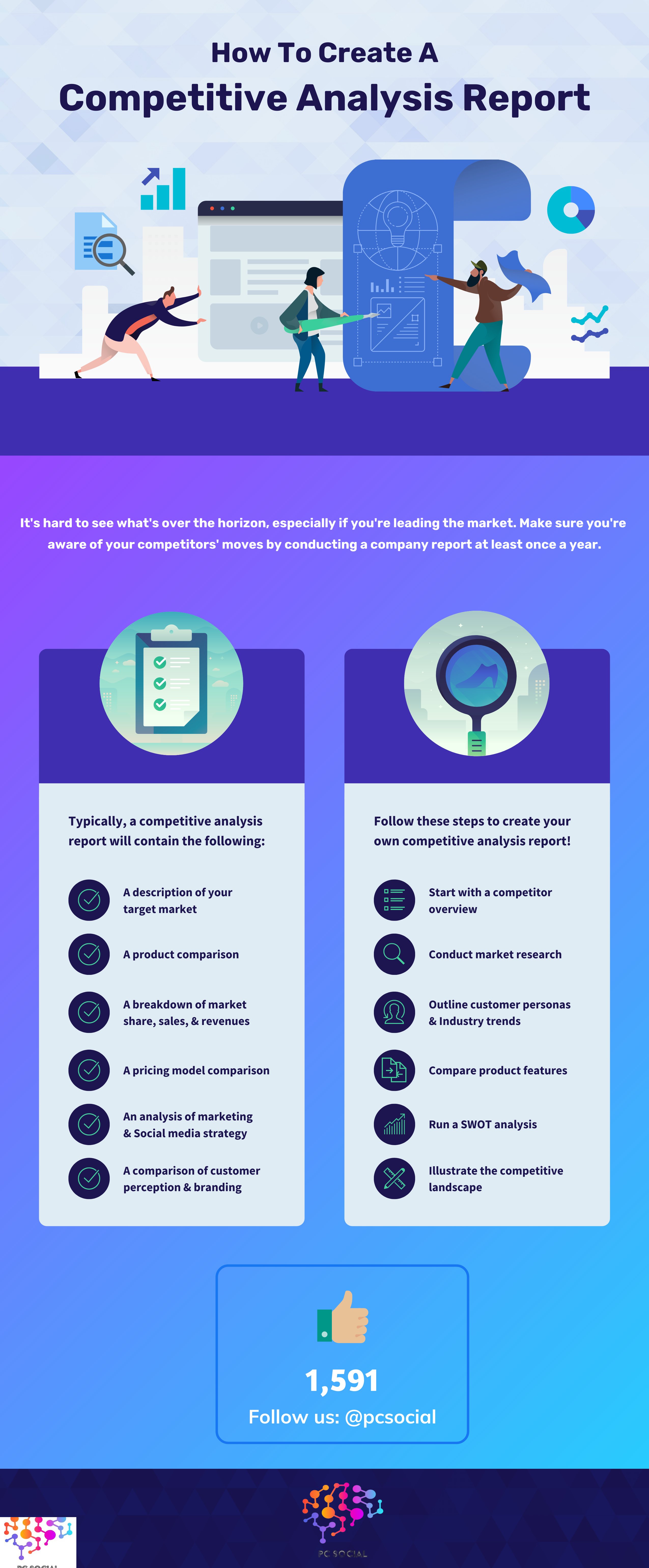
By analyzing competitor data, you can better understand what customers want and how they interact with each brand. This enables you to make more informed decisions about serving your target audience better and further strengthen your position within the industry. With the help of SBI, businesses can take advantage of emerging opportunities and capitalize on them before their competitors have the chance — giving them a distinct competitive edge. Overall, social business intelligence is an invaluable tool for researchers looking to understand their competitors’ performance better. It helps to provide actionable insights into customer sentiment, points of friction, and marketing campaigns. By leveraging the power of social business intelligence, companies can gain a deeper understanding of their markets and customers to make better decisions and ensure success in an ever-evolving digital landscape.
Build Customer Relationships
Business intelligence tools, such as social business intelligence (SBI), provide businesses with the insights they need to build meaningful customer relationships. Through SBI, companies can better understand customer sentiment and preferences, enabling them to develop marketing campaigns and strategies tailored to their target audience’s needs. Additionally, SBI can help companies identify trends in customer behavior and utilize this data to create more effective customer service protocols. With SBI, businesses can track key performance indicators in real time, allowing them to make informed decisions about their business strategy and stay ahead of market conditions.
SBI can also give businesses an edge in understanding customer feedback and utilizing this data to improve their products and services. By analyzing customer reviews, complaints, and feedback on social media platforms, businesses can identify potential issues with their offerings and then use this information to develop better solutions for their customers. Additionally, SBI can be used to measure the success of marketing campaigns and track customer engagement across multiple channels. This helps businesses make better decisions about reaching their target audience and ensure their messaging is heard. Social business intelligence gives companies a powerful tool for developing meaningful customer relationships. SBI allows firms to gain valuable insights into their target customers’ needs, preferences, and behaviors. This data can then be used to create customized marketing strategies, refine products and services, and measure the success of campaigns. With SBI, companies can gain a competitive edge in an ever-changing market.
Evaluate Sales Funnels
Social business intelligence (SBI) is the perfect tool for evaluating your sales funnels and analyzing customer behavior. With SBI, you can track how customers interact with your sales funnel at each journey stage. You can understand how each channel contributes to your bottom line in real-time, from engagement to clicks to conversions. This data can be used to make informed decisions about where improvements could be made, such as adjusting marketing campaigns or improving key performance indicators.
SBI gives you an idea of what’s working and what isn’t in your sales funnel, allowing you to make proactive changes to optimize it. From understanding which channels are most successful to pinpointing where customers may drop off, SBI helps you quickly identify and address issues. This also allows you to tailor your offering better to maximize customer engagement and satisfaction. SBI can also provide valuable insights into customer behavior, such as which channels they prefer or how long they remain engaged with a funnel step. This information can create more personalized customer experiences, vital for creating loyal relationships and increasing conversions. Additionally, SBI can help identify potential crossing points or areas of overlap between different funnels so you can better understand customer intent. Social business intelligence is invaluable for optimizing sales funnels and increasing conversions. By using SBI, businesses can gain valuable insights into customer behavior, allowing them to identify areas of improvement and tailor their offerings to maximize customer engagement. With SBI, companies can stay ahead in the ever-changing market and gain a competitive edge.
 Pre-approving and Qualifying Leads
Pre-approving and Qualifying Leads
Examples of Successful Implementation of Social BI
By leveraging SBI, businesses can gain valuable insights into their customer’s needs and preferences, enabling them to make more informed decisions and increase their chances for success. One example of a successful implementation of SBI was Airbnb. Airbnb used SBI to understand better how potential customers viewed their services, allowing them to adjust their offerings accordingly. By gathering and analyzing data from social media conversations, Airbnb identified key pain points for customers holding back their growth. With this new understanding, they developed several products and features to address these issues, such as a streamlined booking process and 24/7 customer support. These changes proved successful in driving revenue and improving customer satisfaction. Another example of successful SBI use was by Southwest Airlines. They used SBI to monitor conversations about their services, gaining insights into customer sentiment towards their offerings and identifying improvement areas. This allowed them to act swiftly on feedback and make changes where necessary, leading to increased customer satisfaction and loyalty.
Other examples include:
- Companies can use Social Business Intelligence to track customer sentiment and interactions. This can help them understand their customers better to target them more effectively with marketing campaigns. It also allows companies to monitor customer reactions to campaigns and adjust accordingly for better outcomes.
- In real-time, companies can leverage user-generated reports and self-service tools to identify trends, patterns, and behaviors across platforms. This helps them gain an edge over the competition by making informed decisions quickly based on actionable insights from large datasets.
- Companies can measure the effectiveness of their marketing campaigns using social BI tools, giving them a better understanding of which strategies are working best for their business goals and which ones need improvement. This helps them adjust their campaigns for maximum results and improved customer satisfaction.
- Companies can use social BI to identify influencers significantly impacting their campaigns’ success. By tracking key performance indicators (KPIs) such as engagement rates, they can determine which influencers have the most potential to reach their target markets effectively.
- Companies can use social BI to improve customer relationship management (CRM). By gathering data from various sources, companies can better understand their customers and develop targeted marketing strategies for improved customer loyalty.
The success of Airbnb and Southwest Airlines proves the importance of Social Business Intelligence (SBI) in the 21st century. SBI is a valuable tool for businesses and organizations to gather, analyze, and leverage data from social media conversations. This data provides organizations with insights into customer opinions, trends, preferences, and needs which can be used to inform strategic decisions and shape product offerings. By leveraging SBI, businesses can adjust their offerings according to customer needs more quickly than ever while driving revenue and improving customer satisfaction.
Interactive Business Intelligence for Sharing and Collaboration
Collaborative intelligence is essential for BI applications because it allows different users to analyze data and share information, enabling more in-depth insights. Interactive BI facilitates easy collaboration and sharing by allowing business users and collaboration teams to share and exchange insights. Social professionals must be trusted and empowered to share their insights to help businesses better understand their customers and the types of data they generate. Leading companies in BI continue to prioritize the development of interactive BI solutions that include collaborative features, predictive analytics, and shared analytic project libraries.
Interactive BI solutions make it easy for business users to collaborate and share insights. The platform helps experts to identify data flows and trends, as well as identify opportunities for improvement. It also provides a platform for collaboration between individuals from different departments or regions, enabling real-time analysis and decision-making. By providing interactive features, businesses can maximize the value of their data investments to gain a competitive edge. The ability to share information is vital to social BI success. For example, sharing insights with customers enables companies to understand their preferences and needs, which can be used to create better products and services. Companies can also use the insights gained through collaborative intelligence to develop strategies to help them grow their business. Social business intelligence is essential for any business that wants to maximize the value of its data investments and gain a competitive advantage. With SBI, companies can assess customer sentiment, build relationships, perform market research, evaluate sales funnels, and measure campaign success while staying ahead of their competition.
Conclusion
Social Business Intelligence is a powerful strategy for businesses to understand customers, generate insights and make data-driven decisions. With its interactive features, companies can maximize the value of their data investments to gain a competitive edge. Furthermore, by leveraging real-time data, companies can identify skill gaps and train employees efficiently. Therefore, businesses should consider investing in a social business intelligence solution as the potential benefits far outweigh implementation costs.
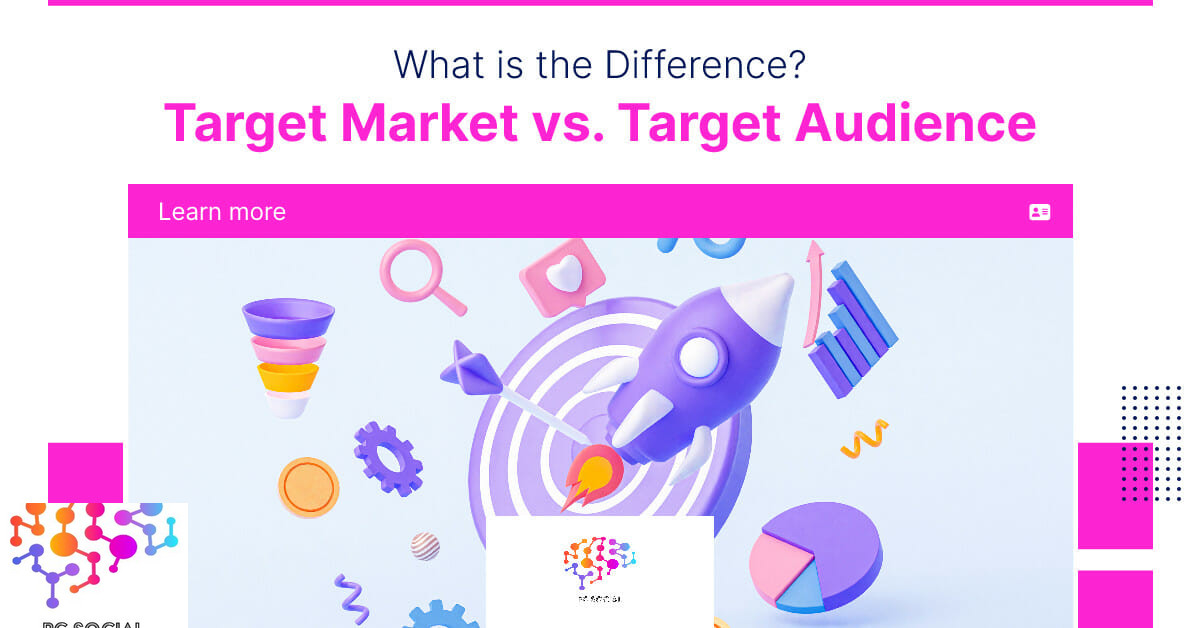
Target Audience vs Target Market — What’s the Difference?
In this blog post, we will uncover the enigmatic nature of these two ideas and demonstrate their significant impact on businesses.
2023
August 14
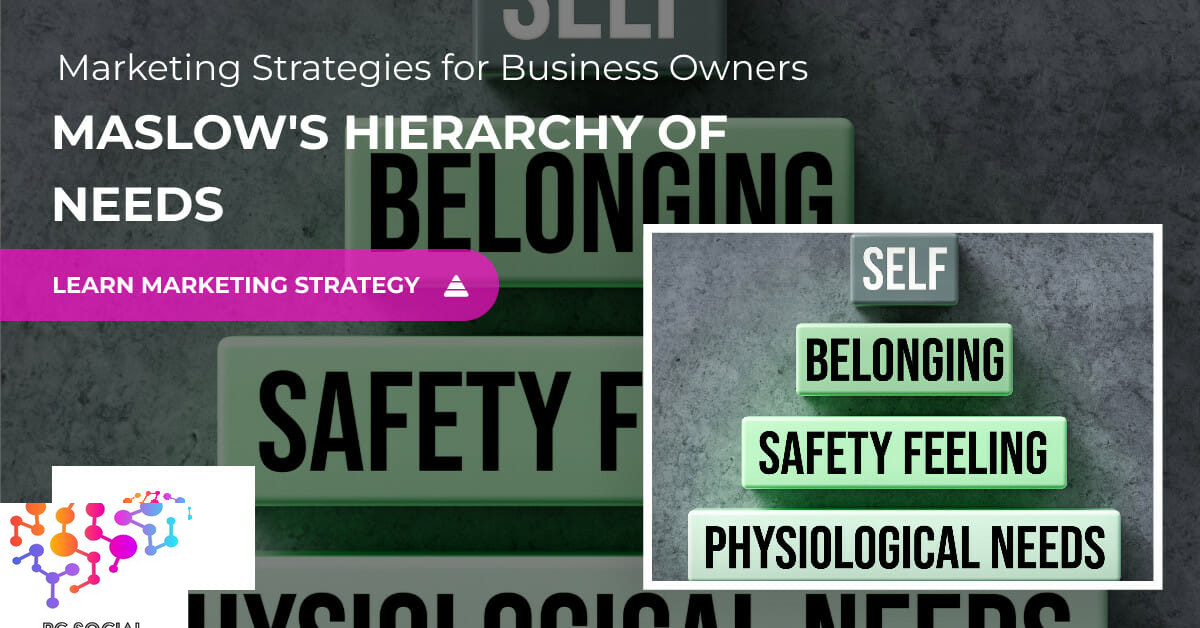
Maslow’s Hierarchy of Needs: Marketing Strategies for Small Business Owners
In this presentation, we will discuss how Maslow’s Hierarchy of Needs can enhance marketing strategies for small business owners.
2023
June 30

Consumer Insight: Predicting Future Needs through Data Analytics
This article will explore how data analytics can be used to analyze consumer trends and predict future needs.
2023
June 27
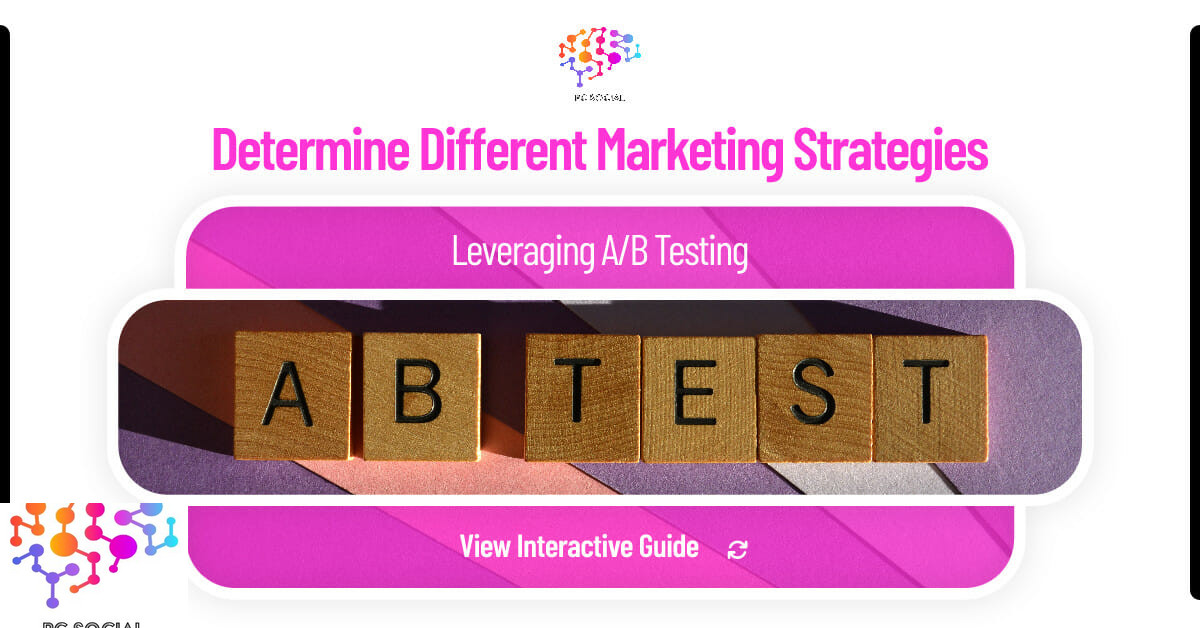
Leveraging A/B Testing to Determine Different Messaging Strategies (Interactive Guide)
In this interactive guide, we will explore the benefits of A/B testing and provide tips on leveraging A/B testing to determine the effectiveness of different messaging strategies.
2023
June 26

Using Music as a Content Marketing Strategy Hack
This article will show how incorporating music into your content marketing plan can significantly enhance its effectiveness.
2023
June 13
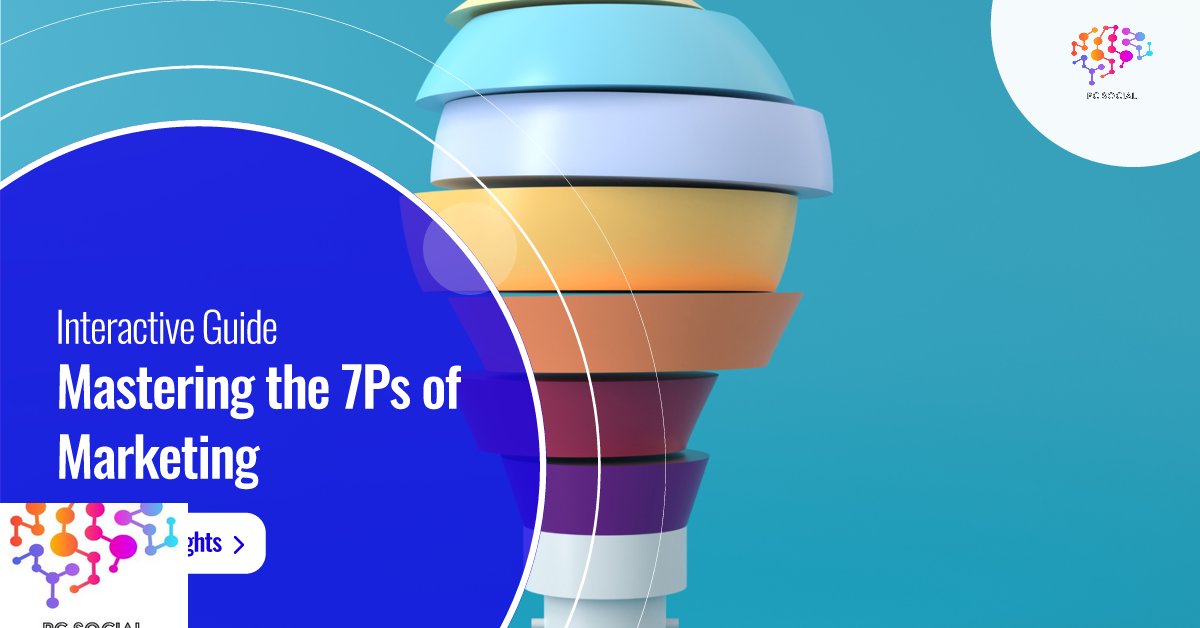
Mastering the 7P’s of Marketing (Interactive Guide)
In this interactive guide, I'll conduct a comprehensive analysis of the 7Ps of marketing, examining each element in detail. I'll also offer practical advice on how you can effectively incorporate …
2023
May 22
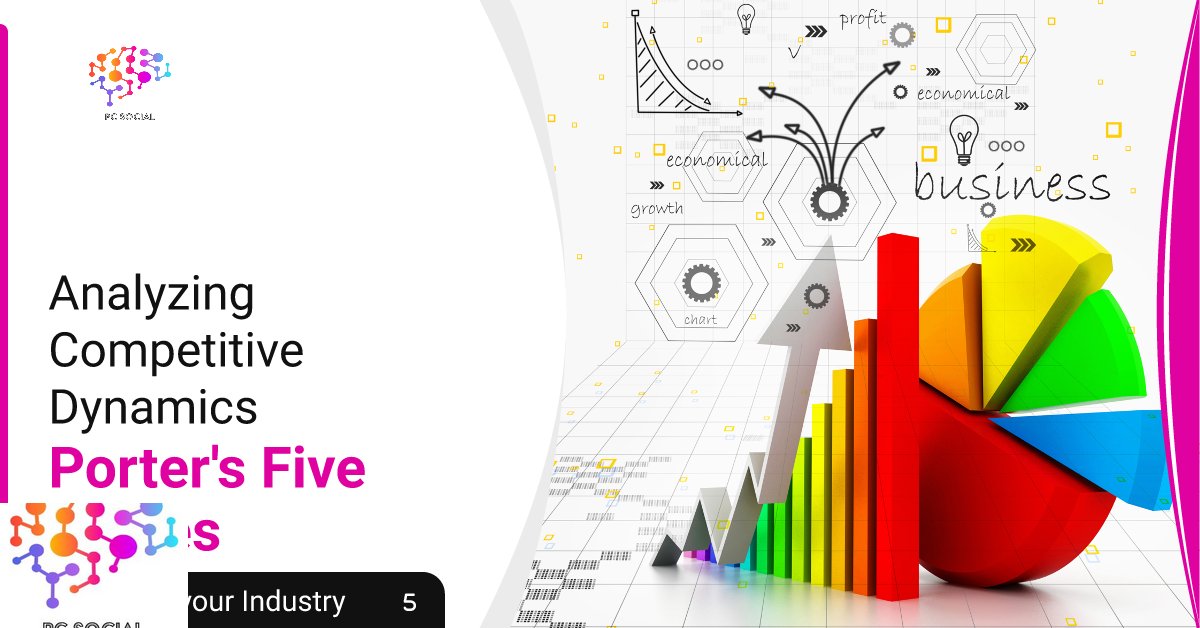
Porter’s Five Forces: Analyzing Competitive Dynamics for Strategic Decision-Making
This article will explore these five forces in greater detail and discuss how they impact businesses and industries.
2023
May 19

Understanding Your Target Market: The Importance of Market Research
This blog will explore the link between market research and consumer behavior. Companies can leverage this knowledge to create successful marketing campaigns and products.
2023
May 16
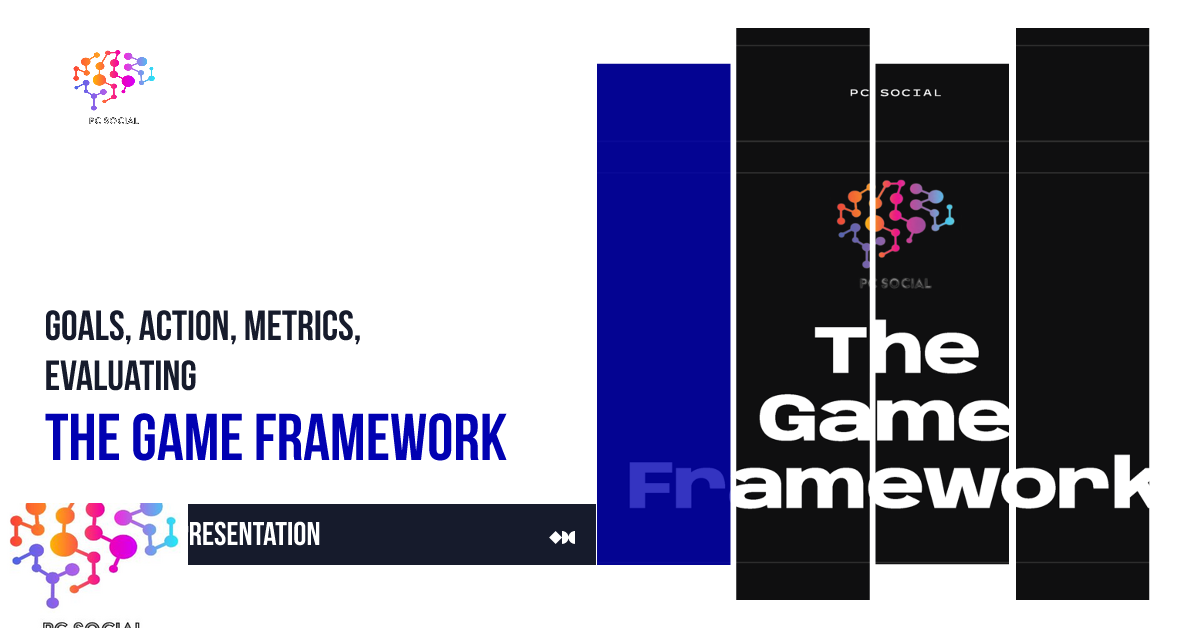
The Game Framework (Interactive Presentation)
Do you want to make progress quickly toward meeting your desired outcomes? If so, the Goals, Action, Metrics, Evaluating (GAME) framework offers a powerful tool for developing and achieving your …
2023
May 15

The Hidden Persuaders: Marketing Tactics Used to Manipulate Consumers
This blog post will discuss the insights and concepts from "The Hidden Persuaders" and how businesses can use them to craft their marketing strategy.
2023
May 02

How Electromagnetic Messaging Can Help Your Marketing Strategy
This blog post will discuss how the Iraqi War utilized electromagnetic messaging and how you can apply these techniques to your marketing strategy.
2023
April 30

The Power of Subliminal Messaging in Marketing
We’ll explore how you can use subliminal messaging techniques in your marketing efforts and efficiently communicate your brand message without being obvious.
2023
April 29



5 Comments
5 Data-Driven Marketing Strategies for Business Growth -
August 7, 2023[…] and effectively targeting the right audience is crucial for any business’s success. Data-driven marketing gives businesses the tools and insights to identify and connect with their […]
Consumer Insight: Predicting Future Needs through Data Analytics -
June 27, 2023[…] By understanding customer behavior through data analytics, businesses can provide a more personalized customer experience. This increases satisfaction as customers feel their needs are being met and understood. With this increased satisfaction comes loyalty, a critical factor in any successful business. […]
Porter’s Five Forces: Analyzing Competitive Dynamics for Strategic Decision-Making -
May 19, 2023[…] create effective strategies that give them a competitive edge. Doing so can lead to more successful business outcomes and help set the stage for sustained growth and success in the long run. It’s […]
How to Create a Dataset: A Comprehensive Step-by-Step Interactive Guide -
May 17, 2023[…] This blog post will cover how businesses can use SBI to gain actionable insights to make better decisions and get a competitive edge in the marketplace—also the benefits of implementing SBI in your social media marketing strategy. Read More […]
Understanding Your Target Market: The Importance of Market Research -
May 16, 2023[…] your target audience is critical to the success of your business. To achieve successful marketing campaigns that can effectively attract and engage with the right […]